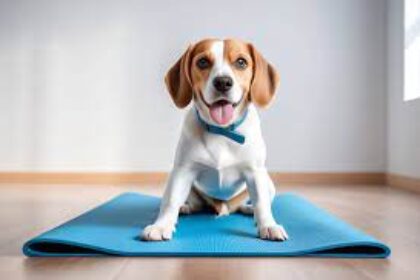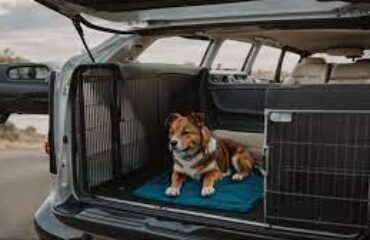
The Best Exercise Routines for Different Pet Breeds

As pet owners, we all want to ensure that our furry friends are healthy and happy. One important aspect of their well-being is making sure they get enough exercise. However not all pets are the same, and different breeds have different exercise needs. In this blog post, we will explore the best exercise routines for various pet breeds to help you keep your furry companion in top shape.
High-energy breeds like Border Collies, Jack Russell Terriers, and Dalmatians require plenty of physical activity to prevent boredom and destructive behavior. For these breeds, a combination of long walks, runs, and interactive games like fetch or agility training is ideal. These activities not only help them burn off excess energy but also provide mental stimulation.
Medium-energy breeds such as Golden Retrievers, Labrador Retrievers, and Boxers benefit from a mix of moderate exercise like brisk walks or hikes and mentally stimulating activities like obedience training or puzzle toys. Keeping them active helps prevent obesity and promotes overall health and well-being.
Low-energy breeds like Bulldogs, Basset Hounds, and Pugs may not require as much exercise as their high-energy counterparts, but they still need daily activity to maintain a healthy weight and prevent common health issues associated with inactivity. Short walks around the neighborhood or indoor play sessions can help keep these breeds fit without overexerting them.
Cats are known for being independent creatures, but they still need regular exercise to stay healthy and prevent obesity. Interactive toys like laser pointers or feather wands can encourage your feline friend to engage in playful activities that mimic hunting behaviors. Cat trees or shelves can also provide opportunities for climbing and jumping.
Small pets like rabbits, guinea pigs, or hamsters also benefit from regular exercise to maintain their physical health and mental well-being. Providing them with ample space to run around or explore outside of their cages can help keep them active and engaged.
Understanding the exercise needs of different pet breeds is essential for ensuring that they lead happy and healthy lives. By tailoring their exercise routines to suit their individual breed characteristics, you can promote their overall well-being while strengthening the bond between you and your beloved companion. So next time you lace up your walking shoes or grab a toy for playtime, consider what type of exercise will best suit your pet’s breed – it will make all the difference in keeping them fit and content.
The Best Exercise Routines for Different Pet Breeds
Exercise is essential for keeping pets healthy, both physically and mentally. However, not all pets require the same level or type of exercise. Different breeds have varying energy levels, exercise needs, and preferences. Tailoring your pet’s exercise routine to their breed can help them stay fit, happy, and well-behaved. Here’s a guide to the best exercise routines for different pet breeds.
1. High-Energy Dog Breeds
Breeds:
- Border Collie
- Australian Shepherd
- Labrador Retriever
- Jack Russell Terrier
- Siberian Husky
Exercise Needs:
High-energy dog breeds thrive on vigorous physical activity and mental stimulation. Without enough exercise, they can become bored, anxious, or destructive.
Exercise Routines:
- Long Walks or Runs: These dogs need at least 60-90 minutes of exercise daily. Long walks, runs, or hikes are ideal for burning off energy.
- Fetch and Frisbee: Playing fetch or frisbee in a large, open space allows these dogs to sprint and satisfy their need for speed.
- Agility Training: Agility courses provide a combination of physical and mental stimulation. These breeds excel in agility sports and enjoy the challenge.
- Swimming: Many high-energy breeds, like Retrievers, love water. Swimming is a great low-impact exercise that’s easy on the joints.
- Interactive Toys and Puzzles: Keep their minds sharp with interactive toys that challenge them to solve problems or find hidden treats.
Tip:
Incorporate variety into their exercise routine to prevent boredom and ensure they remain engaged.
2. Moderate-Energy Dog Breeds
Breeds:
- Golden Retriever
- Beagle
- Cocker Spaniel
- Bulldog
- Shih Tzu
Exercise Needs:
Moderate-energy breeds need regular exercise to stay healthy but don’t require the same intensity as high-energy breeds. They enjoy a mix of activities that provide both physical and mental stimulation.
Exercise Routines:
- Daily Walks: A 30-60 minute walk each day is usually sufficient for these breeds. Vary the route to keep it interesting.
- Playtime in the Yard: Moderate play sessions in the yard or a dog park, including games like fetch or tug-of-war, are perfect for burning off energy.
- Short Hikes: These breeds enjoy exploring, so a moderate hike is a great way to engage their senses and give them a workout.
- Obedience Training: Incorporating obedience training into playtime not only provides exercise but also reinforces good behavior.
- Indoor Play: For days when outdoor activities aren’t possible, indoor play with toys or hide-and-seek games can keep them entertained.
Tip:
Balance physical activities with mental challenges, such as teaching new tricks or commands, to keep them mentally stimulated.
3. Low-Energy Dog Breeds
Breeds:
- Basset Hound
- Bulldog
- Pekingese
- Cavalier King Charles Spaniel
- Great Dane
Exercise Needs:
Low-energy breeds still need exercise, but their routines should be gentler and less intense. These dogs are typically content with shorter, leisurely activities.
Exercise Routines:
- Short Walks: A 20-30 minute walk once or twice a day is usually sufficient. Keep the pace slow and steady.
- Gentle Play: Engage in gentle play sessions, such as a slow game of fetch or indoor games that don’t require a lot of running.
- Swimming: For breeds prone to joint issues, swimming can provide a low-impact form of exercise.
- Interactive Toys: Use toys that encourage mild activity, like treat-dispensing puzzles or tug toys.
- Stair Climbing: If your dog is up for it, climbing stairs at home can provide a good workout without overstressing their joints.
Tip:
Be mindful of any breed-specific health concerns, such as respiratory issues in Bulldogs, and tailor the exercise accordingly.
4. Small Dog Breeds
Breeds:
- Chihuahua
- Pomeranian
- Dachshund
- French Bulldog
- Yorkshire Terrier
Exercise Needs:
Small dogs are often full of energy, but their exercise needs can usually be met with shorter, more frequent activities throughout the day.
Exercise Routines:
- Short Walks: Small dogs benefit from several short walks each day, totaling 20-40 minutes.
- Indoor Play: Small breeds can get a lot of exercise indoors. Play games like fetch or chase in the living room or hallway.
- Interactive Games: Use toys that stimulate their minds and keep them physically active, such as small puzzle toys or hide-and-seek with treats.
- Dog Parks: A trip to the dog park allows small breeds to socialize and run around safely in a controlled environment.
- Agility for Small Dogs: Some small breeds, like Terriers, enjoy mini agility courses tailored to their size.
Tip:
Monitor small dogs closely during outdoor activities, as they can be more vulnerable to temperature extremes and overexertion.
5. Senior Dogs
Breeds:
- Applies to all breeds as they age.
Exercise Needs:
Senior dogs, regardless of breed, require gentle exercise to maintain mobility, manage weight, and keep their minds active. Adjust their routine based on their individual health and energy levels.
Exercise Routines:
- Short, Frequent Walks: Several short walks each day are ideal for senior dogs. Keep the pace slow and avoid rough terrain.
- Swimming: Swimming is excellent for older dogs with joint issues, providing a gentle workout that’s easy on the body.
- Gentle Play: Engage in light play sessions that don’t require jumping or running. Use soft toys or play gentle tug-of-war.
- Stretching and Massage: Incorporate gentle stretching or massage to help maintain flexibility and ease joint stiffness.
- Mental Stimulation: Keep their minds sharp with simple puzzle toys, treat-dispensing toys, or nose work games.
Tip:
Always monitor your senior dog for signs of discomfort or fatigue, and adjust the exercise routine as needed to ensure they remain comfortable.
6. High-Energy Cat Breeds
Breeds:
- Bengal
- Siamese
- Abyssinian
- Sphynx
- Burmese
Exercise Needs:
High-energy cats require regular physical and mental stimulation to prevent boredom and destructive behavior.
Exercise Routines:
- Interactive Play: Engage your cat with interactive toys, such as feather wands, laser pointers, or toy mice, for 10-15 minutes at a time, several times a day.
- Climbing and Scratching: Provide plenty of vertical spaces, like cat trees or shelves, where your cat can climb, jump, and scratch.
- Puzzle Feeders: Use puzzle feeders or treat-dispensing toys to make mealtime an engaging activity.
- Chase Games: Encourage your cat to chase after toys or laser dots to burn off energy.
- Hunting Simulations: Mimic hunting behavior by hiding treats or toys around the house for your cat to find.
Tip:
Rotate toys regularly to keep playtime interesting and prevent your cat from losing interest.
7. Low-Energy Cat Breeds
Breeds:
- Persian
- British Shorthair
- Ragdoll
- Scottish Fold
- Exotic Shorthair
Exercise Needs:
Low-energy cats still need some physical activity, but they prefer gentler, more relaxed play sessions.
Exercise Routines:
- Short Play Sessions: Engage your cat in short, gentle play sessions with toys that don’t require a lot of running or jumping.
- Interactive Toys: Use slow-moving toys or balls that they can bat around at their own pace.
- Scratching Posts: Provide scratching posts or pads to keep their claws healthy and encourage mild activity.
- Window Watching: Set up a perch near a window where your cat can watch birds or other outdoor activities, providing mental stimulation without physical exertion.
- Lure Play: Use wand toys to encourage light play without overexertion.
Tip:
Even low-energy cats benefit from daily playtime to maintain a healthy weight and prevent boredom.
Conclusion
Understanding the specific exercise needs of your pet’s breed is essential for keeping them healthy, happy, and well-behaved. Whether you have a high-energy dog, a low-energy cat, or a senior pet, tailoring their exercise routine to their individual needs will help them thrive. Remember to consult your veterinarian before starting any new exercise regimen, especially if your pet has health concerns. With the right approach, you can ensure your pet enjoys a long, active, and fulfilling life. 🐾


